What's New
Displaying results 3161 - 3170 of 4052
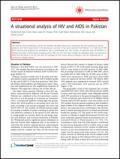
Resource | Publications,
HIV (Human immunodeficiency virus) transmission has been reduced by protected sex and screening of blood products and other body fluids in the developed countries. It has been reported that Pakistan is at high risk of HIV/AIDS infection but presently the prevalence rate is considerably low. The number of reported cases of HIV/AIDS in Pakistan has been continuously increasing since 1987. By 2010 the total number of registered cases has reached to 6000 and this figure is on the rise with the passage of time. Some serious strategies must be implemented to control this deadly disease.
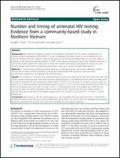
Resource | Publications,
HIV testing for pregnant women is an important component for the success of prevention of mother-to-child transmission of HIV (PMTCT). A lack of antenatal HIV testing results in loss of benefits for HIV-infected mothers and their children. However, the provision of unnecessary repeat tests at a very late stage of pregnancy will reduce the beneficial effects of PMTCT and impose unnecessary costs for the individual woman as well as the health system. This study aims to assess the number and timing of antenatal HIV testing in a low-income setting where PMTCT programmes have been scaled up to reach first level health facilities.
A cross-sectional community-based study was conducted among 1108 recently delivered mothers through face-to-face interviews following a structured questionnaire that focused on socio-economic characteristics, experiences of antenatal care and HIV testing.

Resource | Presentations,
Effective 1 January 2012, a revised application and approval process for renewals will be employed to ensure strategic investments, as described in “Options for Modification of the Application, Renewal and Approval Processes for New and Existing Investments,”.
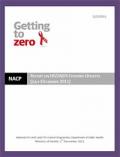
Resource | Publications,
The HIV incidence in Bhutan has seen sharp rise over last decade; this rise has been attributable to increasing prevalence of Sexually Transmitted Infections (2.4%), strengthened HIV detection services with improved infrastructures and nevertheless the improved public awareness on the importance of getting oneself tested. Until July 2011, we have 246 total HIV cases throughout the country, and within the gap of six months the case has increased by 24 making total reported cases of 270.
Strategies have been revised to match the budget and guidelines revised to enhance and strengthen the HIV prevention, diagnosis, treatment, care and support programs. Currently, the National Program has established 4 free standing VCT centers (HISCs) and integrated VCT centers in all the district hospitals. In order to scale up the prevention of mother to child transmission, the program has prioritized to upgrade current Antenatal clinics (ANCs) with the integration of HIV PMTCT services at all levels of health care facilities.
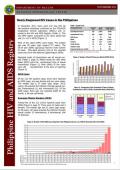
Resource | Fact Sheets,
In November 2011, there were 212 new HIV Ab seropositive individuals confirmed by the STD/AIDS Cooperative Central Laboratory (SACCL) and reported to the HIV and AIDS Registry (Table 1). This was 89% higher compared to the same period last year (n=112 in 2010) [Figure 1].
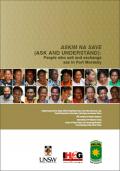
Resource | Publications,
Askim na Save (Ask and Understand): People who sell and exchange sex in Port Moresby is a comprehensive bio-behavioural study of sex work in Port Moresby in Papua New Guinea. The study was designed to fill gaps in knowledge about the sex industry in PNG and to map the sale and exchange of sex in Port Moresby to create a richer and more detailed understanding of sex workers and their vulnerability to HIV.
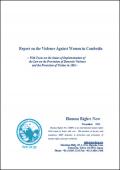
Resource | Publications,
Human Rights Now (hereinafter, HRN) conducted a survey on violence against women in Cambodia in March 2010 under the 'Violence against Women Project'. The survey was carried out after the adoption of the Law on the Prevention of Domestic Violence and the Protection of Victims (hereinafter ‘DV Law’) at the National Assembly of Cambodia in October 2005, focusing on the situation of domestic violence. Although five years have passed since the introduction of the DV Law, this law is yet to be widely used to provide enough protection for women. It has not been fully enforced. The judiciary who is responsible for the enforcement of the law and women themselves do not completely understand the law. As a result, the legal system is not able to prevent domestic violence and provide adequate protection.
In this research, we investigated the actual situation of domestic violence and how the DV Law has been utilised to prevent it. Where the Law is not functioning properly, the reasons and the solutions were also explored.
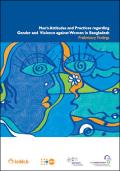
Resource | Publications,
Violence against women and girls (VAWG) remains one of the most pervasive yet least recognised human-rights abuses in the world. It is a worldwide problem, crossing cultural, geographic, religious, social and economic boundaries. It exists in the private and public spheres, and occurs in times of peace and conflict.
This report, Men's Attitudes and Practices Regarding Gender and Violence against Women in Bangladesh, is part of The Change Project: Understanding gender, masculinities and power to prevent gender-based violence. It is the first study of its kind in Bangladesh. Interviewing men has provided new knowledge on prevailing social norms, men's attitudes and behaviours – and how they perpetuate violence. Significantly, this study demonstrates that violence is not inevitable and points us in the direction of how to stop violence before it starts.
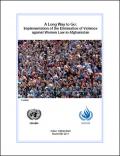
Resource | Presentations,
The Government of Afghanistan took a big step forward in support of women's equality and protection of women's rights when it enacted the Law on the Elimination of Violence against Women (EVAW law) in August 2009. The landmark legislation criminalizes for the first time in Afghanistan child marriage, forced marriage, forced self-immolation and 19 other acts of violence against women including rape, and specifies punishments for perpetrators.
This report examines implementation of the EVAW law by judicial and law enforcement officials throughout Afghanistan for the period of March 2010 to September 2011, and identifies both positive progress and large gaps. The report updates earlier findings on the law's implementation in OHCHR/UNAMA's December 2010 study Harmful Traditional Practices and Implementation of the Law on Elimination of Violence against Women in Afghanistan.
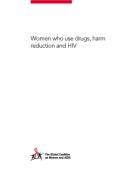
Resource | Fact Sheets,
This issue brief about HIV, harm reduction and the sexual and reproductive health and rights of women who use drugs is part of a series of briefing papers, commissioned by the Global Coalition on Women and AIDS, and is designed to provide up-to-date information around key issues concerning HIV prevention, treatment and care related to women and girls. Harm reduction refers to policies, programmes and practices that aim to reduce the harms associated with the use of psychoactive drugs. The defining features are the focus on the prevention of harm, rather than on the prevention of drug use itself, including a focus on people who continue to use drugs.





